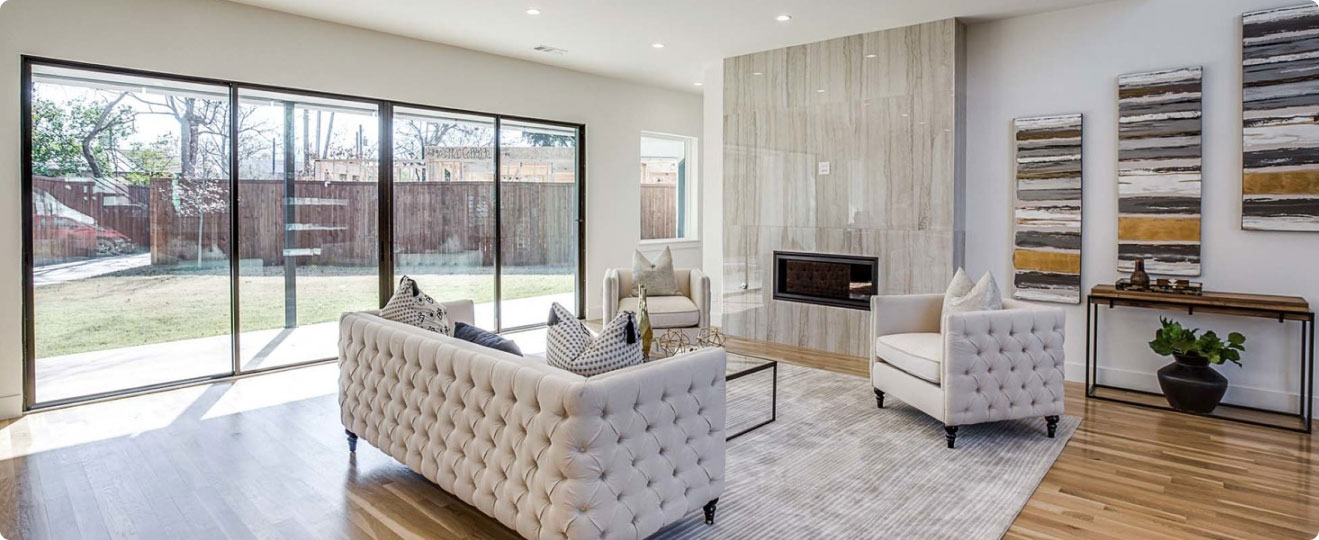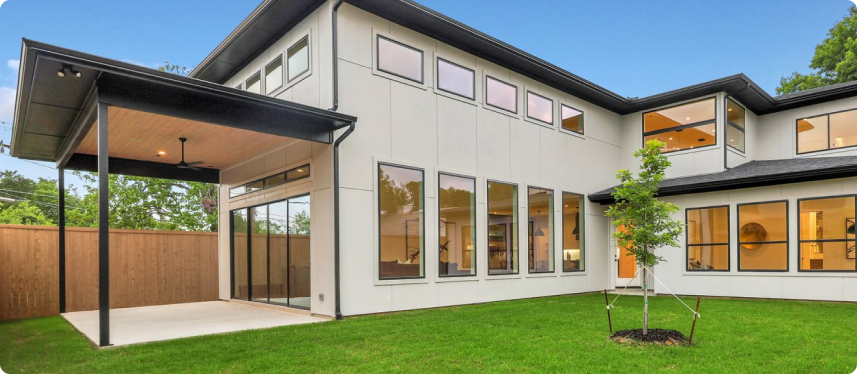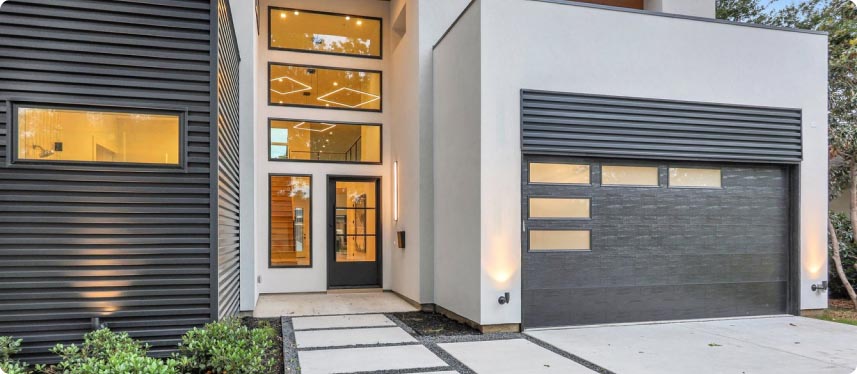
Introduction
Garage conversions in San Leandro provide homeowners with a practical solution to increase living space without the need for extensive new construction. This process allows for the transformation of underutilized garages into functional rooms that can serve as home offices, guest suites, or additional family areas. With a garage conversion, San Leandro residents can make the most of their property, accommodating growing families or the need for extra space while enhancing the overall value and appeal of their homes.
Essential Garage Conversion Rules for San Leandro
What you can build
Maximum Size
The garage conversion cannot exceed 500 square feet, ensuring a balance between expansion and neighborhood aesthetics.
Side/rear setbacks
A minimum setback of 4 feet from the side and rear property lines is required for all garage conversions.
Height limit
The height of the converted structure must not exceed 16 feet to maintain neighborhood harmony.
Building separation
There must be a minimum of 6 feet between the converted garage and any other buildings on the property.
Permitting Process Timeline
Standard
Typically, the standard permitting process for a garage conversion takes about 4-6 weeks, including plan checks and approvals.
Historic Property review
For properties designated as historic, the review process may extend to 8-10 weeks to ensure compliance with preservation standards.
Zoning Regulations in San Leandro
Zoning regulations determine what is permissible when converting a garage.
Garage Conversion Size Limitations:
| Zoning District | Maximum Floor Area Allowed |
| R-1 (Single Family) | 500 square feet |
| R-2 (Two Family) | 600 square feet |
| R-3 (Multifamily) | 700 square feet |
| R-4 (Neighborhood Mixed Use) | 800 square feet |
Height Limitations
Garage conversions in San Leandro must adhere to a height limit of 16 feet to ensure consistency with residential standards.
Building Coverage
The total building coverage for a garage conversion must not exceed 50% of the lot area, preserving open space.
Location
| Property Type | Location Requirement |
| Single-Family Homes | Must be attached to or within existing structures.. |
| Duplex | Must be attached or have a shared wall. |
| Multifamily | Must be within the existing building footprint.. |

Exterior details
The exterior of the converted garage must match the primary residence in materials and style.
Setbacks and Buffer Zones
Conversions must maintain a 4-foot setback from property lines to ensure adequate space between structures.
Minimum Lot Area
Connection for Utilities
The converted garage must have independent connections for utilities, including water, electricity, and gas.
Fire safety
The converted space must comply with local fire safety codes, including smoke detectors and fire-resistant materials.
Room specifications
- Living Area: The living area must provide at least 150 square feet of space for comfort.
- Kitchen: The kitchen area must include basic amenities such as a sink, stove, and refrigerator.
- Bathroom: The bathroom must have a toilet, sink, and shower or bathtub.
- Ceiling Height: The ceiling height must be at least 7 feet to ensure comfort and compliance with building codes.
Short-term Rentals and Home Occupations Regulations
Short-term rentals and home occupations must adhere to local zoning laws.
Building Codes
The converted garage must comply with all applicable building codes, including structural, electrical, and plumbing standards.
San Leandro Garage Conversion Permit Guidelines
| Permit Type | Description | Estimated Fee |
| Building Permit | Required for structural changes | $500 |
| Electrical Permit | Required for electrical work | $200 |
| Plumbing Permit | Required for plumbing installations | $150 |
| Mechanical Permit | Required for HVAC systems | $250 |
| Planning Review | Required for zoning compliance | $100 |
Property Requirements
The property must meet all local zoning and building requirements to qualify for a garage conversion.
Parking
Off-street parking must be provided to replace any lost parking spaces due to the conversion.
Front Setbacks
The converted garage must maintain a minimum front setback of 20 feet from the street.
Side and Rear Setbacks
Side and rear setbacks must be at least 4 feet to provide adequate spacing.
Open Space and Rear Yards
The conversion must preserve a minimum of 30% open space in the rear yard.
Properties That Qualify
Only properties that meet all zoning and building code requirements are eligible for garage conversions.

Development Standards
Single-family Homes
Must follow all local building codes and zoning regulations.
Multi-family Properties
Must maintain compliance with multifamily zoning laws and building standards.
Duplex Properties
Must adhere to duplex-specific regulations and building codes.
Property Designations
- Flood Zones: Conversions in flood zones must comply with local floodplain management regulations.
- Easements: Properties with easements must ensure the conversion does not infringe upon these areas.
- Historic Properties: Conversions of historic properties must undergo additional review to maintain historical integrity.
Summary
Garage conversions in San Leandro offer a practical way to increase living space and property value. By adhering to local building codes and zoning regulations, homeowners can transform their garages into functional and stylish living areas that meet their family’s needs.
FAQs
Start by consulting the local zoning regulations and applying for the necessary permits. This involves visiting the San Leandro Planning Department or their website to understand the specific requirements and restrictions for garage conversions. Once you have a clear understanding of the regulations, you can proceed with drafting plans that comply with these rules and submitting them for approval.
Yes, you can include a kitchen, provided it meets the local building codes and zoning regulations. The kitchen must have essential features such as a sink, stove, and refrigerator, and must adhere to electrical and plumbing standards. It’s important to ensure that the kitchen setup does not exceed the space limitations set by the zoning district.
Windows must comply with local building codes, including egress requirements for safety. This means that windows should be of a certain size and functionality to allow for emergency escape. Additionally, the style and materials of the windows should match those of the primary residence to maintain aesthetic consistency.
Yes, but you must comply with local regulations regarding rental units and obtain the necessary permits. This includes ensuring that the converted space meets the minimum size requirements and has independent utility connections. You may also need to register the unit as a rental property with the city and adhere to any additional guidelines for rental properties.
The materials should match the primary residence to maintain neighborhood aesthetics. This means using similar siding, roofing, and paint colors to ensure that the converted garage blends seamlessly with the existing structure. Using consistent materials helps preserve the visual harmony of the neighborhood and may be required by local building codes.
The number of rooms must comply with local building codes and size limitations. Generally, a garage conversion may include a living area, kitchen, bathroom, and one or two bedrooms, depending on the available space. Each room must meet the minimum size and functionality standards set by the building codes.
You need to ensure that the conversion does not violate any shared property agreements or local regulations. This includes checking for any easements or shared walls that might be affected by the conversion. It’s advisable to discuss your plans with your neighbor and obtain any necessary permissions or agreements before proceeding.
Yes, proper insulation is required to meet local building codes for living spaces. This ensures that the converted space is energy-efficient and comfortable year-round. Insulation requirements may include wall, ceiling, and floor insulation to prevent heat loss and maintain a consistent indoor temperature.
The height limit must be adhered to, which may restrict the addition of a second floor. In San Leandro, the height limit for garage conversions is typically 16 feet. If the existing structure allows, you might be able to include a loft or mezzanine, but a full second floor would generally exceed the height restriction.
A separate entrance is recommended but not always required; check local codes. Having a separate entrance provides privacy and convenience, especially if the converted space will be used as a rental unit or for guests. It also helps in meeting egress requirements for safety.
Conversions for commercial use must comply with zoning laws and may require additional permits. This involves ensuring that the property is zoned for commercial use and that the converted space meets all building codes for commercial occupancy. You may also need to obtain a business license and adhere to any specific regulations for operating a business from a residential property.
Adequate lighting must be provided as per local building codes. This includes both natural and artificial lighting to ensure that the space is well-lit and safe. Lighting fixtures should be installed in all living areas, kitchens, bathrooms, and hallways to meet minimum illumination standards.
Soundproofing may be required, especially if the conversion includes living spaces adjacent to noisy areas. This helps ensure that the converted space is quiet and comfortable. Soundproofing measures can include adding insulation to walls, installing soundproof windows, and using noise-reducing materials in the construction.
Yes, a laundry area can be included, but it must comply with plumbing and electrical codes. This involves installing proper hookups for a washer and dryer, ensuring adequate ventilation, and meeting any space requirements. The laundry area should be designed to be convenient and functional within the converted space.
Durable and moisture-resistant flooring is recommended, such as tile or vinyl. These materials are easy to clean and maintain, making them ideal for high-traffic areas. They also provide a level of protection against moisture, which is important in a garage conversion.
Yes, detached garages can be converted if they meet all local zoning and building requirements. This includes ensuring that the detached garage is within the allowable size limits, maintaining the required setbacks from property lines, and providing independent utility connections.
Yes, once converted, it is considered a permanent part of the property. This means that the converted garage must comply with all building codes and zoning regulations as any other permanent structure. It also adds to the overall property value and may affect property taxes.
Yes, garage conversions can be used as home offices if they meet all local building codes. This includes ensuring that the space is adequately insulated, has proper lighting and ventilation, and meets any electrical and fire safety requirements. A home office can provide a quiet and functional workspace within your property.
Yes, a fire escape plan is required to ensure safety in case of an emergency. This includes having at least two means of egress, such as windows and doors that can be easily accessed in case of a fire. Smoke detectors and fire extinguishers should also be installed in the converted space.
Yes, skylights can be installed as long as they comply with local building codes and height limitations. Skylights can provide natural light and ventilation, enhancing the comfort and aesthetics of the converted space. However, they must be installed properly to prevent leaks and ensure structural integrity.